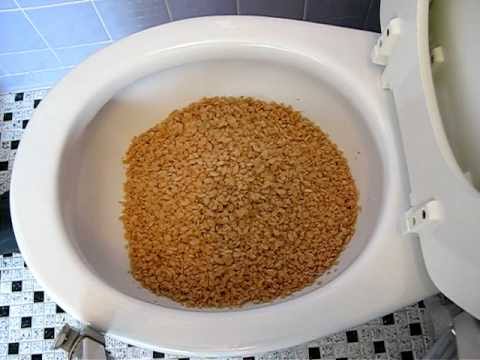Are You Able to Flush Food in the Toilet?
Are You Able to Flush Food in the Toilet?
Blog Article
Just how do you really feel about What Can Happen If You Flush Food Down the Toilet??

Intro
Lots of people are often confronted with the predicament of what to do with food waste, specifically when it concerns leftovers or scraps. One common concern that arises is whether it's okay to purge food down the bathroom. In this article, we'll look into the reasons why individuals may take into consideration flushing food, the repercussions of doing so, and alternative approaches for appropriate disposal.
Reasons that people might consider flushing food
Lack of recognition
Some individuals may not know the potential injury caused by purging food down the toilet. They may mistakenly believe that it's a harmless method.
Ease
Flushing food down the toilet might seem like a fast and simple option to getting rid of unwanted scraps, particularly when there's no nearby garbage can readily available.
Idleness
Sometimes, people may merely pick to flush food out of sheer laziness, without thinking about the effects of their activities.
Consequences of flushing food down the commode
Environmental effect
Food waste that ends up in rivers can add to pollution and damage water communities. In addition, the water made use of to flush food can strain water resources.
Pipes concerns
Flushing food can cause clogged up pipelines and drains, creating costly pipes repairs and troubles.
Sorts of food that must not be flushed
Coarse foods
Foods with fibrous appearances such as celery or corn husks can obtain entangled in pipes and create obstructions.
Starchy foods
Starchy foods like pasta and rice can soak up water and swell, causing blockages in pipes.
Oils and fats
Greasy foods like bacon or cooking oils must never ever be flushed down the toilet as they can strengthen and create obstructions.
Correct disposal approaches for food waste
Utilizing a garbage disposal
For homes outfitted with waste disposal unit, food scraps can be ground up and purged with the plumbing system. Nonetheless, not all foods are suitable for disposal in this manner.
Recycling
Particular food packaging products can be reused, lowering waste and decreasing environmental impact.
Composting
Composting is a green means to dispose of food waste. Organic products can be composted and utilized to enhance dirt for horticulture.
The relevance of proper waste monitoring
Decreasing environmental damage
Proper waste management practices, such as composting and recycling, help lessen contamination and preserve natural deposits for future generations.
Protecting plumbing systems
By preventing the practice of flushing food down the commode, house owners can protect against pricey plumbing fixings and preserve the stability of their plumbing systems.
Verdict
Finally, while it may be appealing to flush food down the commode for convenience, it is necessary to recognize the possible consequences of this activity. By embracing correct waste monitoring techniques and taking care of food waste properly, individuals can contribute to healthier pipes systems and a cleaner atmosphere for all.
FLUSH FOOD DOWN THE TOILET?
FLUSHING FOOD CAN CAUSE BLOCKED DRAINS IN YOUR HOME
All of the plumbing fixtures in your home are connected to the same sewer pipe outside of your home. This outdoor sewer pipe is responsible for transporting all the wastewater from your home to the Council sewer mains. Even small pieces of food that go down the kitchen sink can cause problems for your sewer. It should therefore be obvious that flushing larger bits of food, such as meat, risks a clog in either the toilet itself or the sewer pipes. Flushing greasy food is even more problematic because oil coagulates when it cools, coating the interior lining of your pipes.
THE TOILET IS NOT A BIN
Food isn’t the only thing that people shouldn’t be flushing down the toilet. People use the toilet to dispose of all kinds of things such as tampons, makeup wipes, dental floss, kitty litter and even underwear. Water goes to great lengths to educate residents about the high costs and stress placed on wastewater treatment systems simply from people flushing the wrong stuff down the toilet. It costs taxpayers millions of dollars each year, and homeowners thousands in blocked drain repairs.
FLUSHING FOOD IS A WASTE OF WATER
Flushing food is a waste of our most precious resource - water. In June this year Level 1 water restrictions were introduced to protect water supply from drought conditions. Much of New South Wales continues to be affected by prolonged drought with recent figures revealing up to 97 per cent of the state remains in drought. Depending on whether you have a single or dual flush toilet, every single flush uses between five and 11 litres of water. In the current climate this is a huge amount of water to be wasting on flushing food that should be placed in the bin (or better yet, the compost).
https://www.jabplumbingsolutions.com.au/blog/can-you-flush-food-down-the-toilet

I found that blog entry on Is it safe to flush food (especially rice) down the toilet? when doing a lookup on the web. For those who enjoyed reading our blog posting if you please don't forget to share it. We treasure reading our article about Is it safe to flush food (especially rice) down the toilet?.
Click Here Report this page